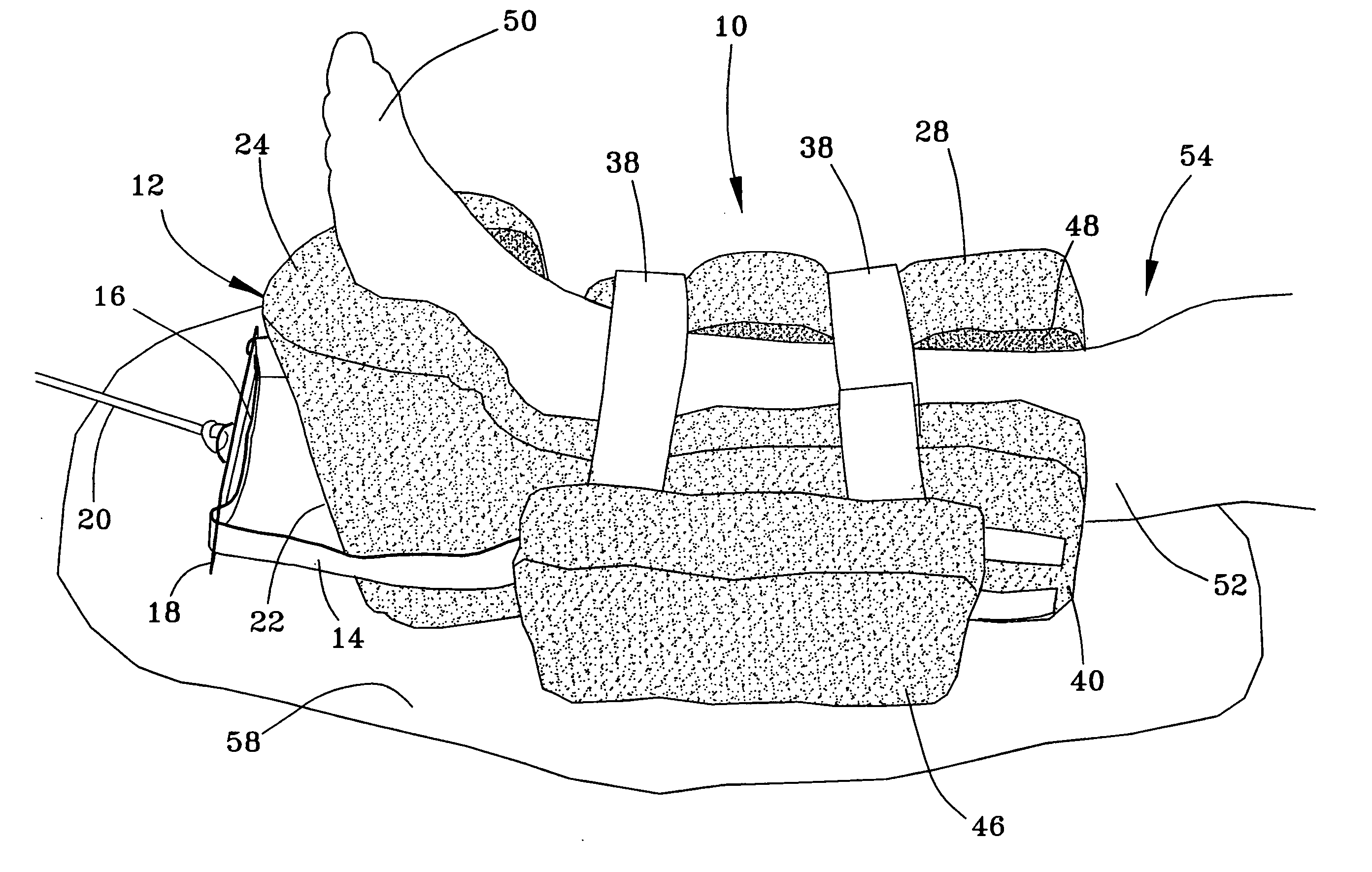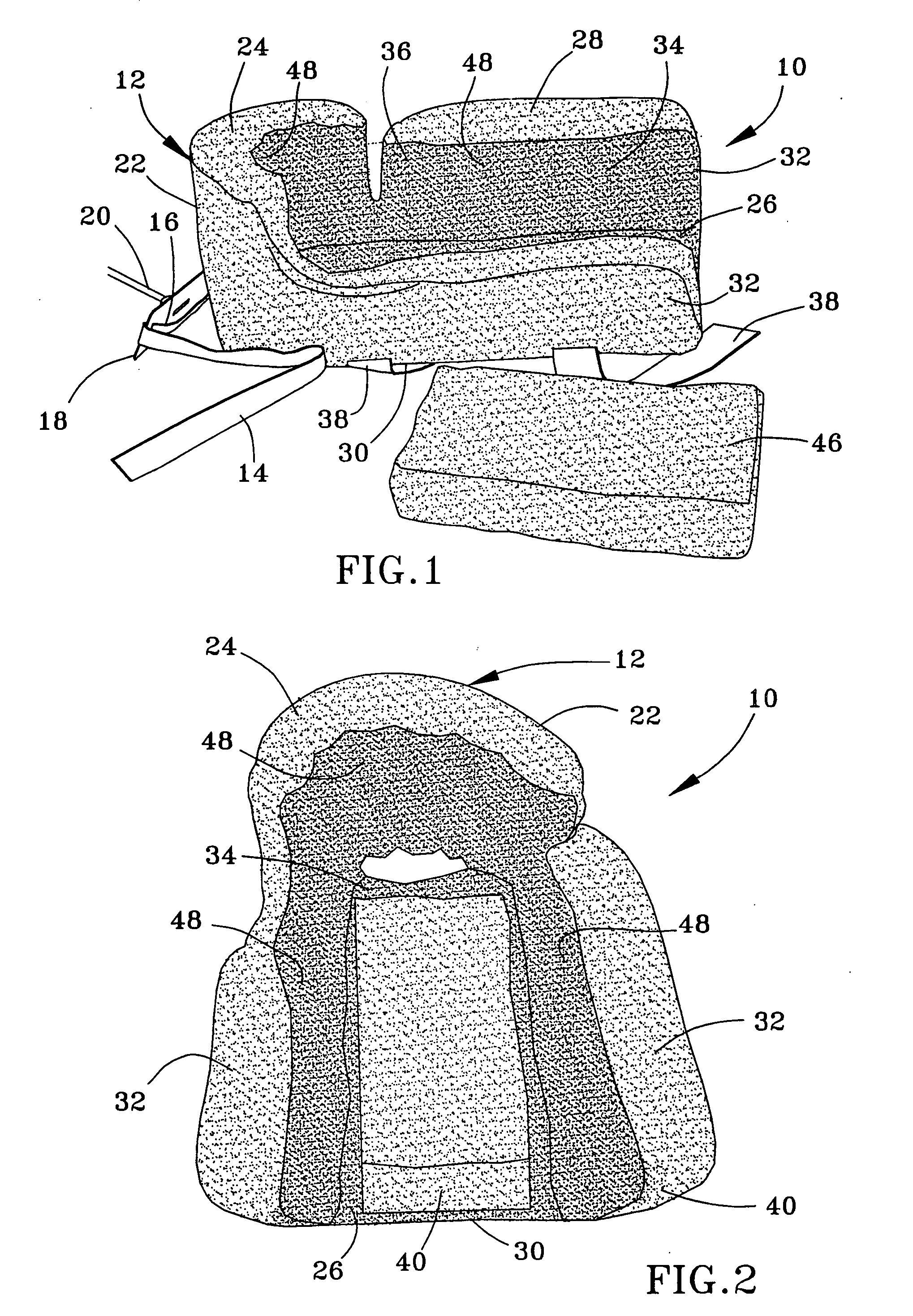Traction device
a traction device and traction technology, applied in the field of traction devices, can solve the problems of current skin traction techniques that do not prevent foot drop, skin traction techniques that do not elevate the heel, and can typically be tolerated, so as to avoid heel or lateral malleolar pressure ulcers, avoid heel drop, and relieve heel pressure
- Summary
- Abstract
- Description
- Claims
- Application Information
AI Technical Summary
Benefits of technology
Problems solved by technology
Method used
Image
Examples
Embodiment Construction
[0015]FIGS. 1 through 4 show a traction device 10 configured to be worn on a patient's foot 50 and lower leg 52 while the patient is in a generally supine position (reclining) on a bed 58 (the term “bed” is used herein to denote any surface on which a patient might recline while traction is applied to the patient's leg). The traction device 10 is configured to support the patient's heel 56 in a manner that avoids foot drop and relieves heel pressure to avoid heel or lateral malleolar pressure ulcers, while also being capable of transmitting full traction loads of up to ten pounds (about 45 N) to the patient's leg 54.
[0016] The present invention preferably makes use of a traction boot 12 that is configured similarly to a suspension boot commercially available under the name DM Systems HEELIFT®, which is disclosed in U.S. Pat. No. 5,449,339 to Drennan. The content of Drennan relating to the construction and composition of the suspension boot is incorporated herein by reference. The H...
PUM
 Login to View More
Login to View More Abstract
Description
Claims
Application Information
 Login to View More
Login to View More - R&D
- Intellectual Property
- Life Sciences
- Materials
- Tech Scout
- Unparalleled Data Quality
- Higher Quality Content
- 60% Fewer Hallucinations
Browse by: Latest US Patents, China's latest patents, Technical Efficacy Thesaurus, Application Domain, Technology Topic, Popular Technical Reports.
© 2025 PatSnap. All rights reserved.Legal|Privacy policy|Modern Slavery Act Transparency Statement|Sitemap|About US| Contact US: help@patsnap.com



